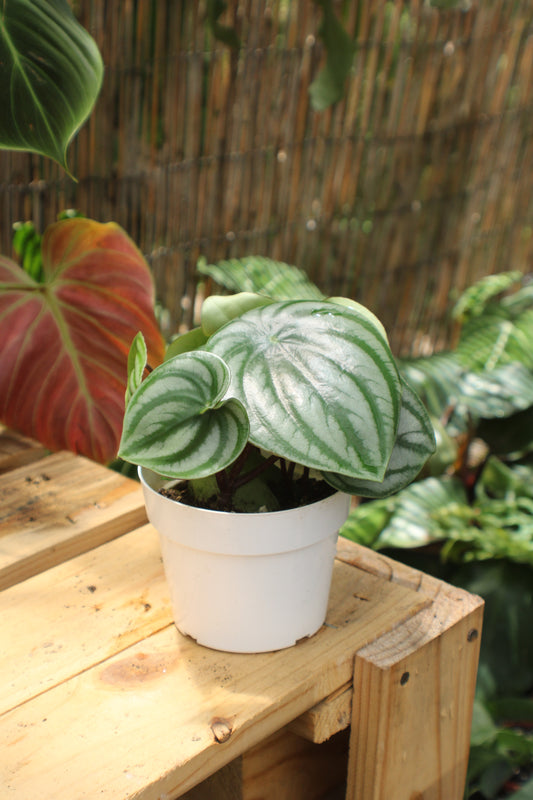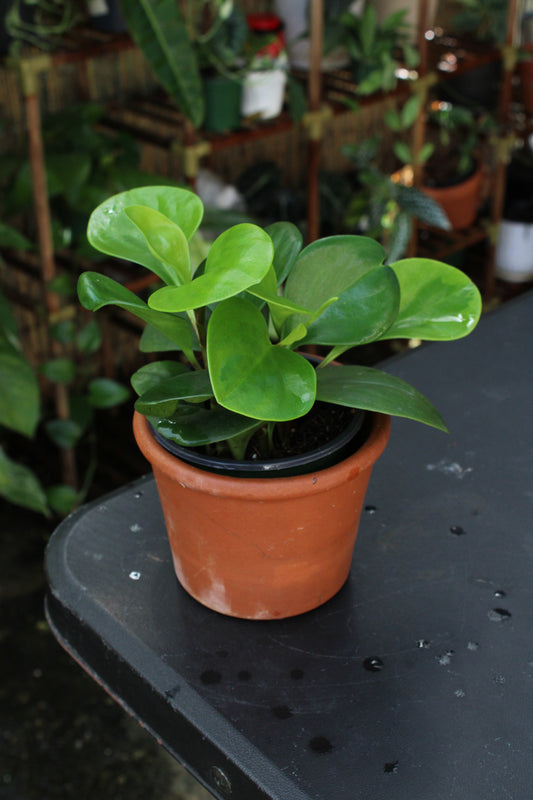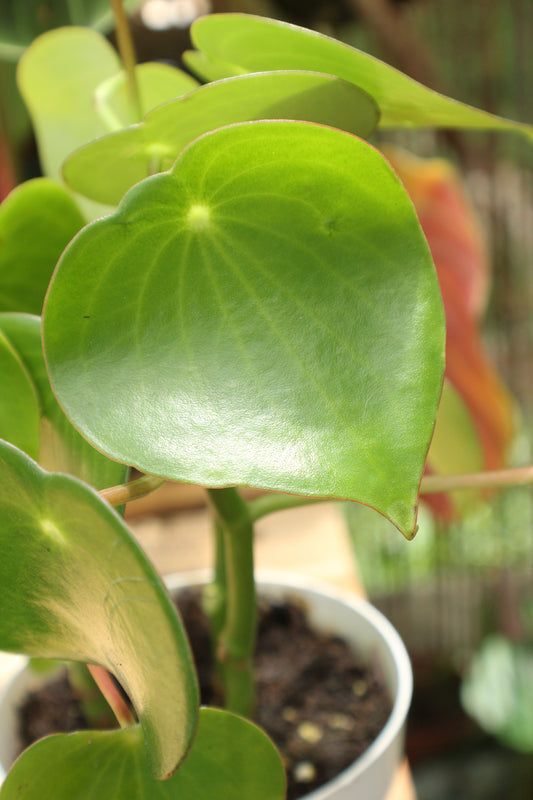
Peperomia Care
Peperomias are a diverse and charming group of small, easy-to-care-for houseplants that are a pet-friendly family. These plants are known for their attractive foliage, unique leaf shapes, and low-maintenance care requirements.
Collapsible content

Baby Rubber Peperomia
LIGHT
The Baby Rubber Peperomia prefers bright indirect light but will tolerate medium to low light. Too little light will slow down growth while too much light will burn the leaves.
WATER
Water this peperomia when it's completely dry or when the leaves are soft. Overwatering will cause yellow leaves and it may die.
HUMIDITY
Peperomias do well in house humidity, but this one enjoys 40-50% humidity. High humidity will make the plant thrive and grow faster. It will benefit an additional misting.
TEMPERATURE
Your peperomia prefers temperatures between 65-80 degrees.
FOOD
The Baby Rubber Peperomia likes to be fed monthly or every other month with some general indoor plant fertilizer.
TOXICITY
Peperomias are non-toxic to pets and humans.
Additional Tips*
Use a well-draining substrate, such as a mixture of coconut fiber, perlite, pine bark, and activated charcoal. This ensures good aeration and prevents excess humidity.
Raindrop Peperomia
LIGHT
The Raindrop Peperomia prefers bright indirect light but will tolerate medium to low light. Too little light will slow down growth while too much light will burn the leaves.
WATER
Water this peperomia when it's completely dry or when the leaves are soft. Overwatering will cause yellow leaves and it may die.
HUMIDITY
Peperomias do well in house humidity, but this one enjoys 40-50% humidity. High humidity will make the plant thrive and grow faster. It will benefit an additional misting.
TEMPERATURE
Your peperomia prefers temperatures between 65-80 degrees.
FOOD
The Raindrop Peperomia likes to be fed monthly or every other month with some general indoor plant fertilizer.
TOXICITY
Peperomias are non-toxic to pets and humans.
Additional Tips*
Use a well-draining substrate, such as a mixture of coconut fiber, perlite, pine bark, and activated charcoal. This ensures good aeration and prevents excess humidity.
Watermelon Peperomia
LIGHT
The Watermelon Peperomia prefers bright indirect light but will tolerate medium to low light. Too little light will slow down growth while too much light will burn the leaves.
WATER
Water this peperomia when it's completely dry or when the leaves are soft. Overwatering will cause yellow leaves and it may die.
HUMIDITY
Peperomias do well in house humidity, but this one enjoys 40-50% humidity. High humidity will make the plant thrive and grow faster. It will benefit an additional misting.
TEMPERATURE
Your peperomia prefers temperatures between 65-80 degrees.
FOOD
The Watermelon Peperomia likes to be fed monthly or every other month with some general indoor plant fertilizer.
TOXICITY
Peperomias are non-toxic to pets and humans.
Additional Tips*
Use a well-draining substrate, such as a mixture of coconut fiber, perlite, pine bark, and activated charcoal. This ensures good aeration and prevents excess humidity.






